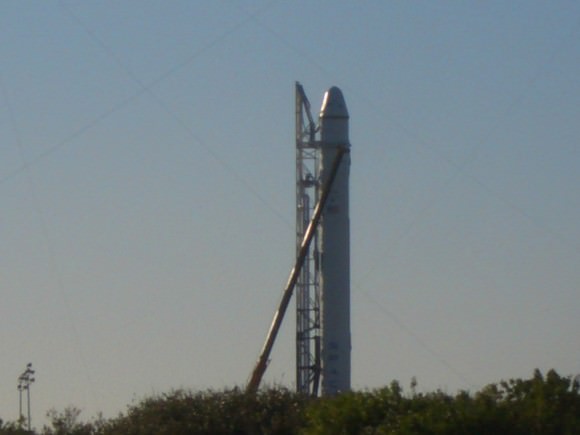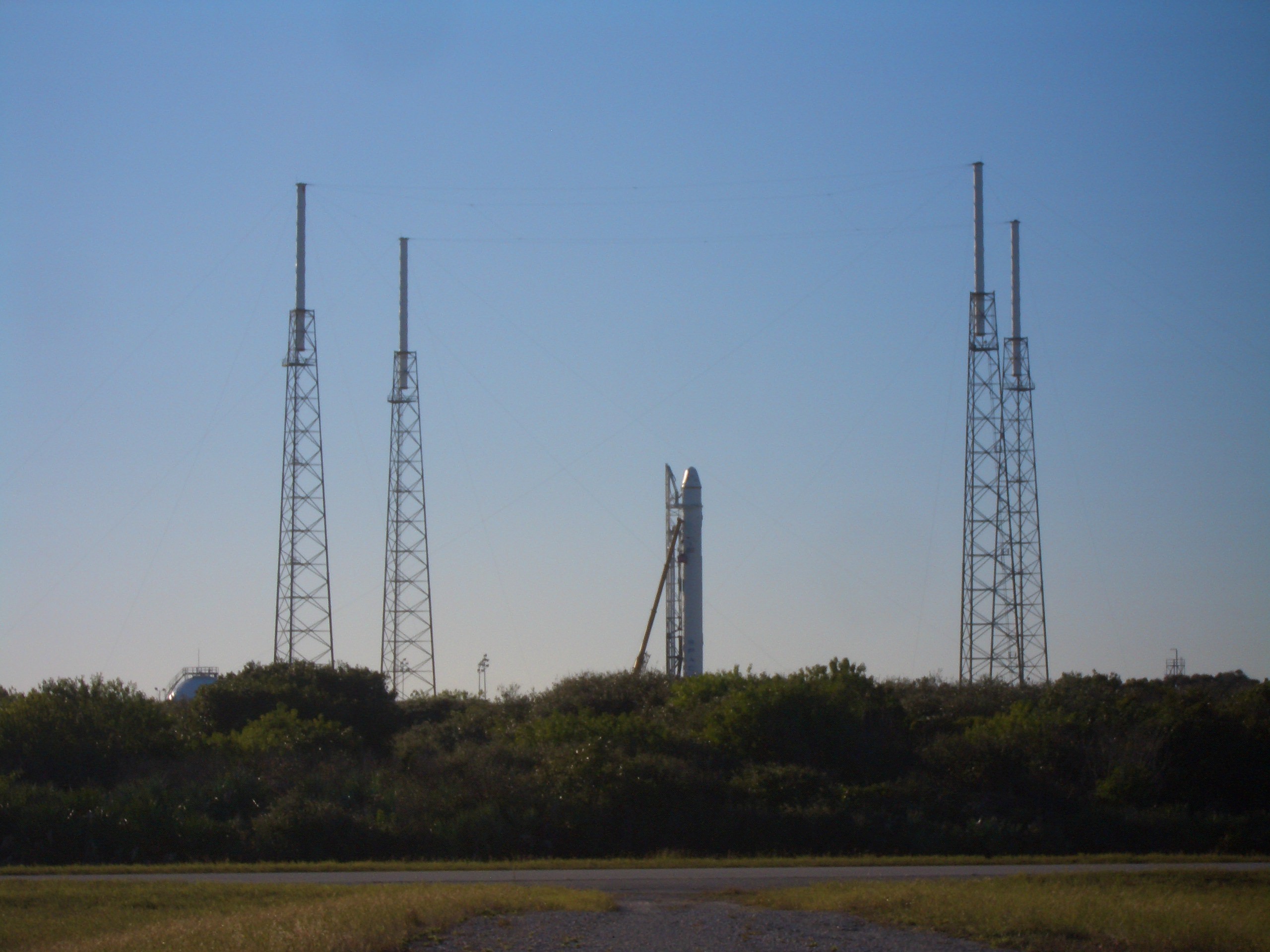[/caption]
CAPE CANAVERAL –Engineers with the commercial space company SpaceX have analyzed two small cracks in the rear segment of the second stage engine nozzle. These cracks are located near the end of the nozzle extension where there is very little stress and so it is thought that they in themselves would not cause a flight failure. SpaceX decided that they did warrant further investigation to make sure that these cracks are not symptoms of a far larger problem.
SpaceX must have liked what they saw because the company has decided to go ahead with the launch, now scheduled for Wednesday. The launch window will open at 9 a.m. EDT and will close at 12:22 p.m. EDT.
The bell shaped Merlin Vacuum nozzle is made out of niobium sheet alloy, and is approximately 9 feet tall and 8 feet at the base. This nozzle thins out to approximately twice the thickness of a soda can near the end. Although it is composed of a refractory alloy metal and has a melting temperature high enough to boil steel, this component is, in geometric terms, the simplest component of the engine.
The niobium nozzle extension works to increase the overall efficiency of the Merlin engine while on-orbit. For this first flight of the Dragon, this efficiency is not required, but the component was placed on the rocket’s second stage by default.
SpaceX is launching the first of its Dragon spacecraft on the first demonstration flight under the $1.6 billion Commercial Orbital Transportation Services (COTS) contract that the space firm has with NASA. Under this contract SpaceX is required to fly three demonstration flights before conducting 12 supply missions to the International Space Station (ISS).



Also, they probably *did* machine off the cracks, to prevent them spreading. As noted, the efficiency of a full dimensioned nozzle is not required.
Jason, could you post in the future also the GMT time of the events? I think this would be very helpful for the European readers (and not only). Thanks.
Quasy,
I will try to do so. I normally do not (in large part due to my primary concern with getting the article out quickly) – however, now that you’ve brought it to my attention – I will try!
Sincerely and with thanks, Jason Rhian
Thank you for the quick reply.
I don’t think that it is necessary to have all the time milestones in the article referenced to GMT, but an important one would help.
I travel in Europe usually between two time zones (none of them being GMT), and I always know my reference to the GMT, but I have to calculate it for EST or PST time zones; I guess it would be the same for a US reader to calculate their local time of the event based on CET or EET times.